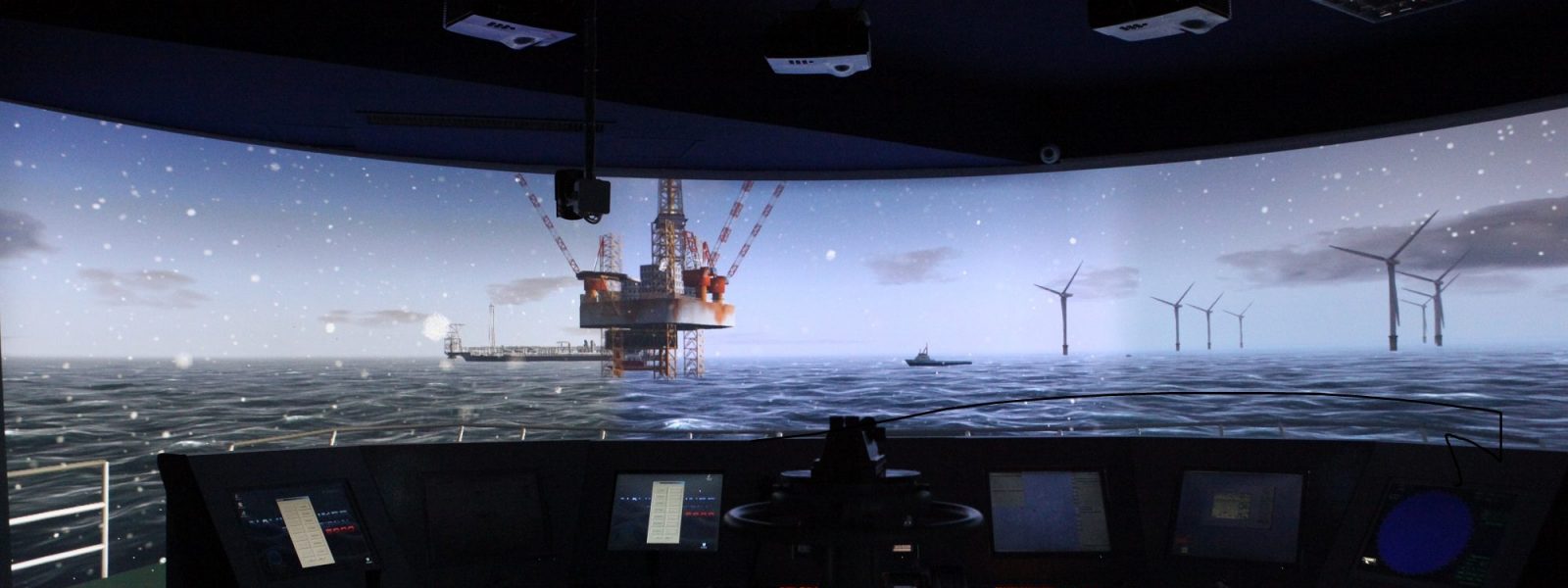DURATION:
5 days (40 hours)
TYPE OF COURSE:
Blended, as a mixture of (1) lecture sessions conducted by a GIMET instructor in a classroom and (2) simulator sessions conducted on a Wartsila iCloud NTPRO 5000 full bridge simulator owned by GIMET.
METHOD OF DELIVERY:
Part 1 of the course (days 1 to 4): lecture sessions.
Part 2 of the course (day 5): simulator sessions.
ASSESSMENT:
A final assessment is scheduled at the end of day 5 of the course, covering the course’s curricula.
CERTIFICATE:
Trainees that successfully complete this course are awarded an internationally recognized course certificate, proving that the holder has successfully completed a simulator course in simulator with bridge teamwork and resource management.
COURSE AIM:
The course is practical and theoretical and consists of a series of exercises performed on a ship handling simulator. Bridge teamwork is dealt with lectures or interactive computer-based training (CBT). This course is also intended to provide with the knowledge, skill and understanding of leadership and teamwork on board a ship in accordance with the 2010 Manila Amendments, specifically as stated in tables A-II/1, A-III/1 and A-III/6.
COURSE OBJECTIVES:
At the end of the course, trainees should be able to:
1. be familiar with the use of engines and helm for ship maneuvering;
2. evaluate the effects of wind, current, shallow water, banks, and narrow channels and loading conditions of the ship;
3. be aware of the importance of planning a voyage and the need for an alternate plan;
4. apply the bridge procedures and bridge teamwork during watchkeeping and ship handling, in normal and in emergency situations;
5. exercise interactive communication style and benefit of building up a common shared mental model of the planned voyage;
6. demonstrate sufficient understanding and knowledge of leadership and teamworking and have the relevant skills to competently carry out the duties of officer in charge of a navigational watch on ships of 500 gross tonnage or more, or officer in charge of an engineering watch in a manned engine-room or designated duty engineer in a periodically unmanned engine-room;
7. exercise a good knowledge of related international maritime conventions, recommendations and national legislation;
8. apply tasks and workload and resource management;
9. apply decision making techniques.
ENTRY STANDARDS:
According to IMO Model 1.22, trainees wishing to attend this course should have a minimum of 6 moths’ watchkeeping as officer in charge of a navigational/engineering watch.
INSTRUCTOR:
Master Mariner with relevant experience in the biggest European simulation training center.
